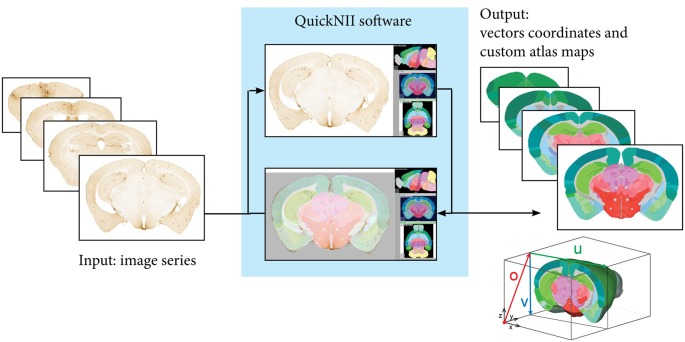Figure 2.
Registration to reference atlas by QuickNII. Following initial preprocessing steps where the sequence and orientation of the serial images is validated and a configuration file generated, images are imported to QuickNII together with a 3-D reference atlas of the mouse brain. In QuickNII, an atlas overlay image which is interactively manipulated to generate an image with position, scale, and orientation (rotation and tilt) that best matches the selected experimental images (DV: +13; ML: −4). QuickNII automatically propagates information about position, scale, and tilt to the entire series. By iterative anchoring of selected key sections, the user can optimize the automatically propagated parameters. The rotation and position of the overlay atlas image is validated and if needed adjusted by the user. Output from QuickNII is a series of custom atlas plates matching each anchored experimental image, and an XML file describing a set of vectors (o, u, and v) that define the position of each image relative to the technical origin of the reference atlas used.

